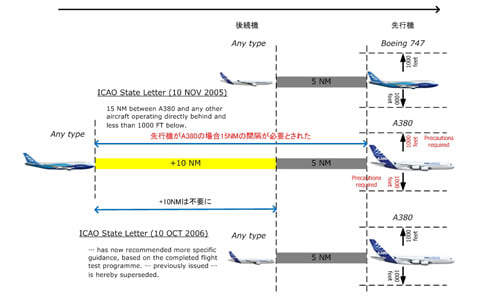|
||||||
|
(since 17 AUG 2005) |
|
USA1549/15JAN LGACLT update from NTSB
今朝、 NTSB: National Transportation Safety Board からメールが入っていましたので、ひとまず引用しておきます。左側の No. 1 Engine もハドソン川で発見され、(現地時間の)木曜日には回収されるとのこと。
(追記)
「第一段ファンブレードに soft body がぶつかった痕跡あり。ブレード3枚損傷、2枚欠落」からして、凄まじいバードストライク(と思われる)であったことがうかがわれる。
と思われる と書いたのは、 NTSB では未だ断定していないので....。
エンジンと翼から生体組織が見つかり、採取したサンプルは DNA 鑑定されるとのこと。また、フラップに見つかった衝突痕跡は、スミソニアンの鳥類専門家のもとで、鳥の種類鑑定が行われるとのこと。
(変な表現ですが)「普通のバードストライクと違いうな」と目を惹いたのは、
“ The engine's electronic control unit is missing and numerous internal components of the engine were significantly damaged. ”
の部分。
第一段のファン・ブレードが損傷することは珍しくないけれど、エンジン・コントロール・ユニットが見つからない、のは、エンジン内部が激しく損傷していたこと以上に衝撃的。コントロール・ユニットはいつの段階で外れてしまったのだろうか。
また、 No. 2 Engine は事故前々日の13日の飛行中、サージを起こして、その後の整備で温度プローブを交換していたとのことで、その整備作業(サージへの適切な対処だったか、交換手順は適切だったか)についても調査中。
ハドソン川河畔現地での調査は今週中に終え、その後、機体を移動してより詳細な調査が行われる。
************************************************************
NTSB ADVISORY
************************************************************
National Transportation Safety Board
Washington, DC 20594
January 21, 2009
************************************************************
NTSB ISSUES UPDATE ON INVESTIGATION INTO DITCHING OF US
AIRWAYS JETLINER INTO HUDSON RIVER
************************************************************
In its continuing investigation of US Airways flight 1549, which ditched into the Hudson River adjacent to Manhattan at approximately 3:30 p.m. on January 15, 2009, the National Transportation Safety Board has developed the following factual information:
The right engine has been externally examined and documented. An examination of the first stage fan blades revealed evidence of soft body impact damage. Three of the variable guide vanes are fractured and two are missing. The engine's electronic control unit is missing and numerous internal components of the engine were significantly
damaged.
What appears to be organic material was found in the right engine and on the wings and fuselage. Samples of the material have been provided to the United States Department of Agriculture for a complete DNA analysis. A single feather was found attached to a flap track on the wing. It is being sent to bird identification experts at the Smithsonian.
The left engine has been located in about 50 feet of water near the area of the Hudson River where the aircraft ditched. The NTSB is working with federal, state and local agencies to recover the engine, which is expected to occur sometime on Thursday.
The NTSB has learned that the right engine experienced a surge during a flight on January 13, 2009, and that subsequent maintenance actions included the replacement of a temperature probe. Investigators from the NTSB's Maintenance Records group are researching this report by examining applicable maintenance records and procedures.
The NTSB's Survival Factors group is in the process of interviewing passengers to learn more about the events surrounding the ditching and the emergency evacuation and rescue. The Operations and Human Performance group is interviewing US Airways flight operations training personnel.
The checked and carry-on baggage is in the process of being removed from the aircraft. Representatives from the NTSB's Office of Transportation Disaster Assistance are working to coordinate efforts with US Airways to return these items to the passengers.
The on-scene documentation of the airplane is expected to be completed by the end of the week. Preparations are underway to facilitate movement and more permanent storage of the airplane so that more detailed documentation of the damage can be performed at a later date.
###
(追記)
「第一段ファンブレードに soft body がぶつかった痕跡あり。ブレード3枚損傷、2枚欠落」からして、凄まじいバードストライク(と思われる)であったことがうかがわれる。
と思われる と書いたのは、 NTSB では未だ断定していないので....。
エンジンと翼から生体組織が見つかり、採取したサンプルは DNA 鑑定されるとのこと。また、フラップに見つかった衝突痕跡は、スミソニアンの鳥類専門家のもとで、鳥の種類鑑定が行われるとのこと。
(変な表現ですが)「普通のバードストライクと違いうな」と目を惹いたのは、
“ The engine's electronic control unit is missing and numerous internal components of the engine were significantly damaged. ”
の部分。
第一段のファン・ブレードが損傷することは珍しくないけれど、エンジン・コントロール・ユニットが見つからない、のは、エンジン内部が激しく損傷していたこと以上に衝撃的。コントロール・ユニットはいつの段階で外れてしまったのだろうか。
また、 No. 2 Engine は事故前々日の13日の飛行中、サージを起こして、その後の整備で温度プローブを交換していたとのことで、その整備作業(サージへの適切な対処だったか、交換手順は適切だったか)についても調査中。
ハドソン川河畔現地での調査は今週中に終え、その後、機体を移動してより詳細な調査が行われる。
Comment ( 1 ) | Trackback ( 0 )
A380 の後ろ (エンルート編)
 『君子危うきに近寄らず』ではありませんが、民間機として世界最大の旅客機である Airbus A380 が起こす後方乱気流は如何許りか、と考えると迂闊に近づくこともできません。しかし、今後、確実にライン就航が増えてくるであろう A380 を怖がってばかりもおられません。
『君子危うきに近寄らず』ではありませんが、民間機として世界最大の旅客機である Airbus A380 が起こす後方乱気流は如何許りか、と考えると迂闊に近づくこともできません。しかし、今後、確実にライン就航が増えてくるであろう A380 を怖がってばかりもおられません。今回はエンルート、しかもレーダ管制下にある場合のセパレーションについてです。
AIM-j 514. 【レーダー間隔】 (IFR)A380 誕生以前には、エンルート・レーダ管制下における Heavy 機と後続機との最小間隔は 5 NM (約 9.3 km )と定められていました。
レーダー管制下では、縦間隔および横間隔にかえて 次のレーダー間隔が適用される。
a) レーダーサイトから40マイル未満の空域:3マイル
b) レーダーサイトから40マイル以遠の空域:5マイル
ただし、RDPがデジタルモードで使用されている場合は:5マイル
現在、A380 でもエンルート・レーダ管制下における後続機との最小間隔は、Boeing 747 などと同様に 5 NM まで詰めることができます。
ここでの後続機とは大きさを問いません。 Heavy, Medium, Light の何でもOKです。

ただ、最初から 5 NM と決まった訳ではなく、先ずは、それまでの Heavy 機の主流である Boeing 747 に対し +10 NM のマージンをとって 15 NM の間隔が必要とされました。(2005年11月に発表された ICAO State letter T3/4.4 - AP111/05 (ATM) "Airbus A380 wake vortex aspects" )
*さらには、最小垂直間隔の 1000 feet の高度差がある航空機に対しても、その影響は未知数として、垂直間隔の指針は未定でした。
その後、 Mach 0.85 で A380 を巡航させ、その 1500 feet 下(後方乱気流の渦は下方に流れるため、同一高度でなく下の高度を選んだ) 後方 5 NM ~ 15 NM の範囲を A318 が徘徊?し、その様子を A380 の 2000 feet 上空を飛行する Falcon 20 に搭載した LIDAR から測定する、という大掛かりなテストが実施されました。
※ LIDAR: LIght Detection And Ranging ドップラーライダ:レーザ光を発射して、大気中の塵や微粒子からの反射光を受信して、その移動速度を風速として計測する装置。
更に、従来の Heavy 機との差異を調べるために、 A380 と A340, B747 とを 0.25 ~ 0.3 NM の間隔で並走?させての同様のテストまで実施されました。

(右脳が全く働かずに描いた図ゆえ、イメージでし難くてすみません)
この試験飛行は、2006年1月~6月の間に、計6回実施され、それらの結果から;
-渦の降下率は B747 も A380 も同じで、1000 feet 下 12 ~ 15 NM の範囲に達する
-様々なパラメータの測定結果では、 B747 と A380 とでは大きな差異はみられない
-後続機のパイロット( FAA のテストパイロットも同乗した)の印象でも B747 と A380 とで差異がない
ことが解りました。
これらの実証試験結果を受けて、ICAO では2006年10月10日に State letter T3/4.4 - AP099/06 (ATM) "Wake turbulence aspects of Airbus A380-800 aircraft" を発表、当初の +10 NM のマージンは不要で、エンルート・レーダ管制の最小間隔は 5 NM まで詰めることが認められたのです。
*最小垂直間隔も 1000 feet が適用されます。
(でも offset track 無しで、1000 feet の高度差で A380 とすれ違うのは相当に迫力でしょうねぇ)
よって、現在は、レーダ管制下にあるエンルート同一高度上に、
... A380 ~(5 NM)~ B737 ~(5 NM)~ A380 ~(5 NM)~ B777 ...
のように並べることもOKとなりました。
あと何年先になるかは見当もつきませんが、5マイル間隔で A380 が行列する光景が見られるのかもしれません。
今回ご紹介した 5 NM の最小間隔は、エンルートにおける Minimum Radar Spacing であり、エンルートでも洋上のような Non-Radar 域には適用されません。
また、アプローチでは、後続機の大きさに応じた、異なる MRS: Minimum Radar Separations 値が規定されています。
A380 のアプローチにおけるセパレーションはまたあらためて。
Comment ( 6 ) | Trackback ( 0 )